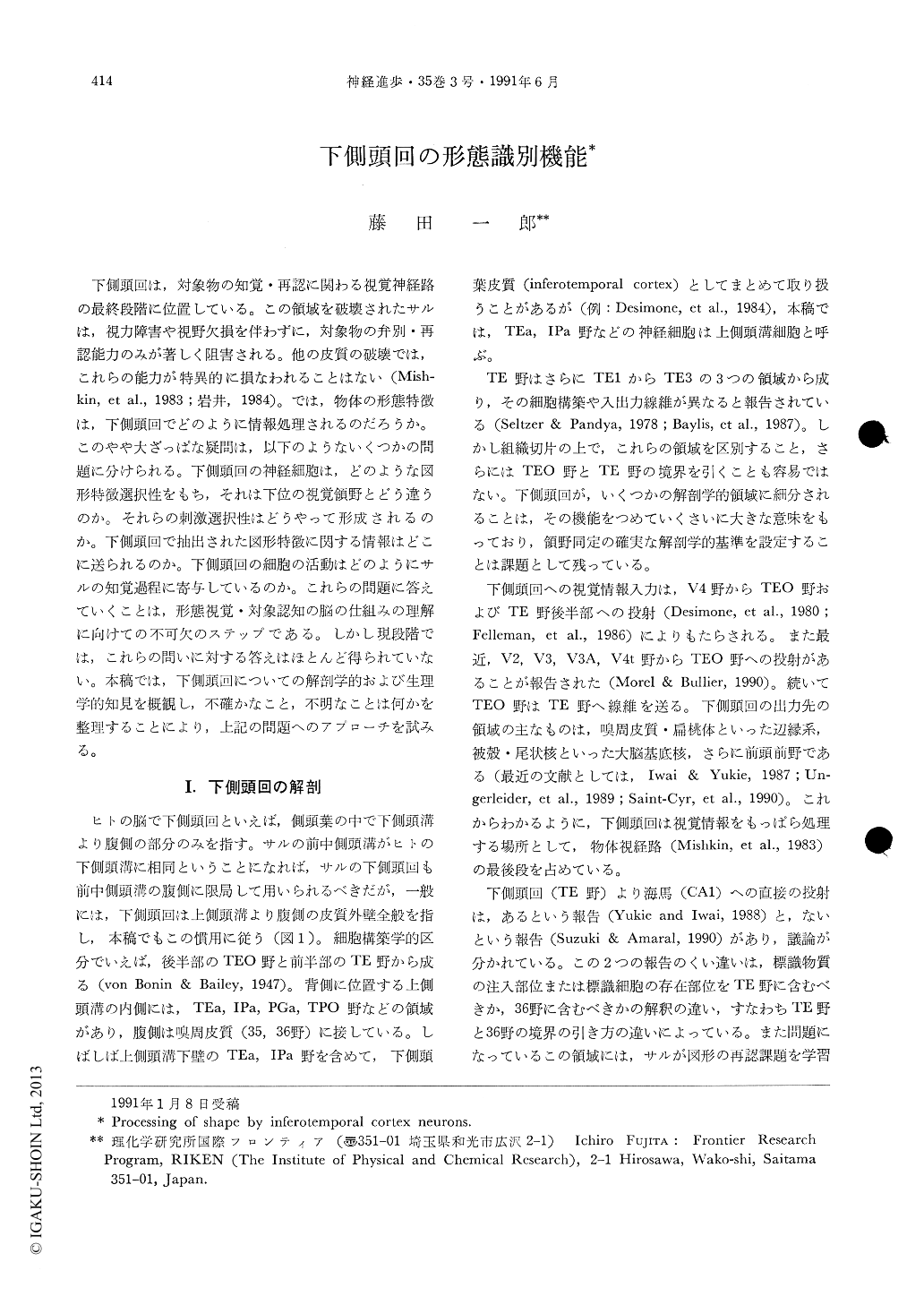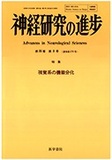Japanese
English
- 有料閲覧
- Abstract 文献概要
- 1ページ目 Look Inside
下側頭回は,対象物の知覚・再認に関わる視覚神経路の最終段階に位置している。この領域を破壊されたサルは,視力障害や視野欠損を伴わずに,対象物の弁別・再認能力のみが著しく阻害される。他の皮質の破壊では,これらの能力が特異的に損なわれることはない(Mishkin, et al.,1983;岩井,1984)。では,物体の形態特徴は,下側頭回でどのように情報処理されるのだろうか。このやや大ざっぱな疑問は,以下のようないくつかの問題に分けられる。下側頭回の神経細胞は,どのような図形特徴選択性をもち,それは下位の視覚領野とどう違うのか。それらの刺激選択性はどうやって形成されるのか。下側頭回で抽出された図形特徴に関する情報はどこに送られるのか。下側頭回の細胞の活動はどのようにサルの知覚過程に寄与しているのか。これらの問題に答えていくことは,形態視覚・対象認知の脳の仕組みの理解に向けての不可欠のステップである。しかし現段階では,これらの問いに対する答えはほとんど得られていない。本稿では,下側頭回についての解剖学的および生理学的知見を概観し,不確かなこと,不明なことは何かを整理することにより,上記の問題へのアプローチを試みる。
The inferotemporal cortex (IT) in the monkey is the final stage of a series of unimodal visual areas involved in object recognition. The first part of this article reviews what is known about physiology and anatomy of the IT. The second part then focuses on the question of how shape information is processed in the IT.
The IT consists of two functionally different subareas, the posterior IT and the anterior IT. Neurons in the posterior IT have relatively small receptive fields. The size ranges from 1 to 5 degrees. These neurons respond well to slits, spots or edges. By contrast, neurons in the anterior IT have large receptive fields, ranging from 10 to more than 30 degrees. Except for a class of neurons selective to biologically significant stimuli such as faces and hands, the stimulus features essential to activate anterior IT neurons are “moderately complex”-neither as simple as slits, spots, edges, nor as complex as particular objects. For example, a neuron responds to a combination of two bars forming a “T-shape”, and another to a triangle filled with horizontal stripes. How can anterior IT neurons encode objects more complex than their “moderately complex” selectivities? Evidence is presented that the anterior IT may have a modular organization. In each module, neurons are selective to limited and overlapped ranges of the stimulus feature spectrum. An important aspect of the organization of the anterior IT is that the optimal feature or the degree of tuning is not identical, but slightly differs among the neurons within a module. All neurons within a module may respond to shapes and patterns which belong to the same “category”, but they are differentially activated by a particular stimulus in the category becasue of the difference in tuning to fine parameters. Activity patterns across a neuronal population within a module may thus be capable of representing complex stimulus features which singl eneurons cannot specify.

Copyright © 1991, Igaku-Shoin Ltd. All rights reserved.


